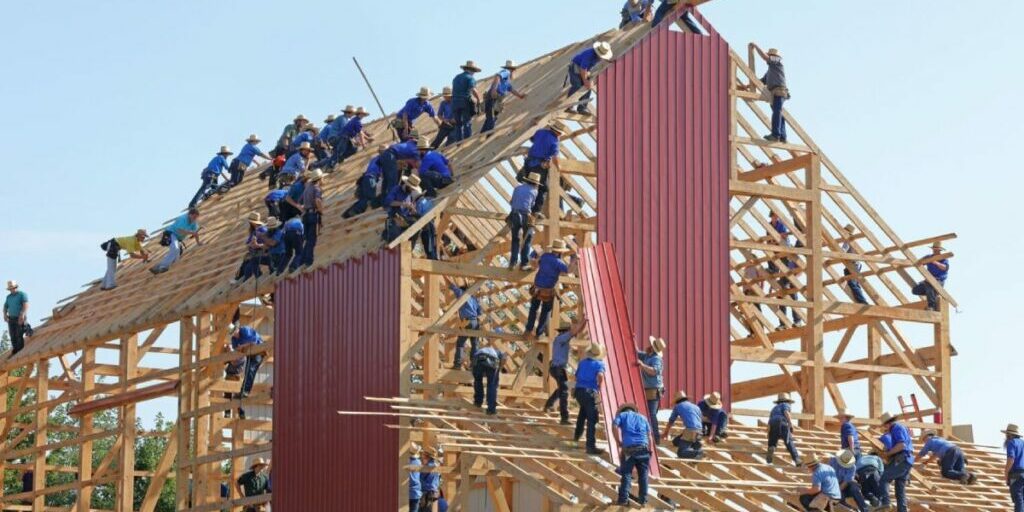3 Reasons Projects Run Rife With Construction Cost Escalations and How To Prevent Them

Construction cost escalations can cause you to lose money and be late to deliver your projects. See the main reasons projects have cost escalations here and how to prevent them.
It’s largely known that construction projects have a tendency to be inefficient. By some estimates 90% of projects go over budget and only 70% of projects finish within their expected timeline. Megaprojects can be the most egregious examples, with numerous notable cases running billions of dollars over budget and years beyond the initial scheduled completion date.
While there are numerous examples of project overruns, one particular example that currently appears to be staged for enormous overages in cost and schedule overruns is the Trans-European Transport Network (TEN-T). An ambitious project of roads, rail, and waterways to connect the entire EU, it’s considered among the largest construction projects of the modern world. Originally targeted for a completion date of 2030, it’s now 50% over budget with a revised date to be fully functional by 2050. It will be interesting to follow this project and see how much the EU’s collective taxpayers eventually pay.
While it might be expected that the largest construction project in the modern era would be more susceptible to inefficiencies, all construction projects have a propensity for the budget and timeline to not match the original plans. Understanding the sources of overages is the first step in addressing and preventing them in future projects.
Here are the top reasons construction projects don’t stay in line with their budget and schedule and how management teams can prevent them.
1. Inaccurate or Incomplete Plans Causes Construction Cost Escalations
If the contractors bidding a project are given plans that don’t take into account the full spectrum of work and site conditions they’ll encounter, then they have no chance of getting their estimates correct. One core issue is that historically architects have used 2 dimensional plans, and construction projects are inherently 3 dimensional. When contractors get out on site, it’s not uncommon for them to encounter impossible spaces and intersections that couldn’t be built. For example, an air duct could be crossed with a wall or utility line. Even trained professionals have trouble visualizing the 3 dimensional complexities of a construction site.
How To Address Inaccurate or Incomplete Plans
If using conventional 2 dimensional plans, the first line of defense is to add in more review cycles. A second set of eyes will go a long way in seeing disconnects in an overall design. After weeks or months of drafting a design, the architect’s minds may grow tired and not think as clearly about all the minute details. Ensuring the review cycles of one’s colleagues are thorough and periodic will help refine the smaller details of the designs.
Ultimately using BIM (Building Information Modeling) is the solution, as it maps the entire design in a 3 dimensional space. It actually maps the design to a 7 dimensional space, with time, budget, sustainability, and maintenance being the other dimensions. As for the bidding process and ensuring the bids are correct, having the clarity of being able to see the project in 3 dimensions will ensure the entire design is possible in the physical realm. No longer will contractors get on the 2 way radio and call the project manager down to the site to figure out what to do about criss-crossed lines or other oddities that slipped past the designers’ review.
The 4th dimension of BIM – Time – ensures the contractors know where they fit into the overall project and that their team is ready and available to complete the work. This helps with not only planning for the crew, but also materials, equipment, and access to the part of the project they are going to work on.
2. Time Mismanagement
I’d like you to take a look at the featured image of this article. It’s a popular pic of the Amish raising a barn. While we’ve all heard the phrase “barn raising,” we don’t frequently pause to think about how amazing it is that a group of people can come together and work cohesively as a unified team and successfully build their neighbors’ barn. The type of leadership, teamwork, collaboration, and communication involved don’t frequently find their way to conventional construction projects. While I can’t pretend to be an expert in Amish barn raising, I think it’s fair to assume that enough members of the community are familiar with the barn design that they can build each section in turn. The more knowledgeable barn raisers would invariably lead certain aspects of the build, while the newer workers follow their directions. When one section of the barn is completed, the workers swarm like ants to the next, until the entire structure is done. By doing so, they can build an entire barn in a single day.

The Amish have some distinct advantages in working collaboratively – they’re a unified community so have established relationships, they aren’t on payroll so they aren’t sensitive to being asked to do things that are out of scope, and the designs of the barn are familiar to all.
How To Improve Time Management
Drawing from our off-the-grid countrymen’s example in barn raising, we can infer the following ways to improve time management in our own construction management projects.
- The first is building a cohesive team. While all the planning goes into the tangible details of what it will take to bring a construction project to fruition, at the end of the day it’s people who are building it. There are troves of resources on team building, among which include setting clear expectations, reward systems, and mixers. The workers in the field will be making day to day and minute by minute decisions that will make or break the overall project. If they feel disrespected or a lack of leadership, then they may disengage and their work will suffer. To contrast, if they feel a commitment to the overall project they’ll put in the extra effort to work through issues when they encounter them.
- Stay on top of the schedule. Schedule planning starts at the beginning of the project, and continues throughout. By constantly checking in with each part of the project, teams can be notified of unexpected changes before they grow into a larger issue. This is part of where having a cohesive team will help out, as they’ll be more likely to communicate better with other members of the team and leadership.
- Consider a different project structure. While the design-bid-build (DBB) method is the most common, it doesn’t always foster a collaborative work environment. As soon as a change in scope is encountered, work may stop, change orders ensue, and budgets and schedules slip. As a result, alternative methods have emerged including the Integrated Project Delivery Method (IPD). In order to promote harmony and collaboration among teams, it groups Owners, Architects, Engineers, and Contractors all on the same team. Rather than addressing concerns as one group against another, it removes the blockades that grind projects to a halt. While it can’t be declared the universal panacea for project management success, it does have its merits that should be considered.
3. Hiring the Wrong Team Causes Construction Cost Escalations
The best plan can be lost to a world of change orders and delays if the wrong team is hired. At the end of the day, many projects are awarded to the lowest bidder regardless of their track record and reputation. From small projects to large scale endeavors, the teams that are out in the field are the ones implementing the owner’s visions. Character is something that can be fostered and people can grow and change over time, but it’s also something that’s inherent to a person. The aforementioned team building exercises are intended to bring out the better characteristics of someone’s personality. But starting with teams that are already healthy and functioning well can give you a head start in having a smooth running project.
How To Hire the Right Team for Your Construction Project
It’s important to shop around and read reviews. If you’re hiring a plumber, be sure to check out their Yelp reviews. While a few bad reviews may not be the end of the world, too many of them could indicate an endemic issue with their work. When hiring contractors for larger projects, it’s usually best to stick with who you know. You can get recommendations from trusted colleagues to fill out the team. At the end of the day, those who take pride in their work tend to stick together and to know each other. At the same time, less reliable contractors may also know each other and will bring on similar caliber workers. Starting with leadership that has a high level of integrity can permeate throughout an entire project.
Cost escalations in construction projects are so common they’re expected. Owners and all involved are likely to see it as a part of the cost of doing business and will plan for it in their budget and financing. If they don’t, their project will likely fail. The success rate of construction projects staying on budget is so low it has to be taken into account in their overall planning. While realistic financial planning is important, construction management teams need to always be working toward staying as close to their initial budgets and timelines as possible. By using BIM software for the designs, improving time management, and hiring the right team, they can greatly increase the chances their project will run smoothly and efficiently.
What ways do you prevent Construction Cost Escalations? Tell us about it here.




